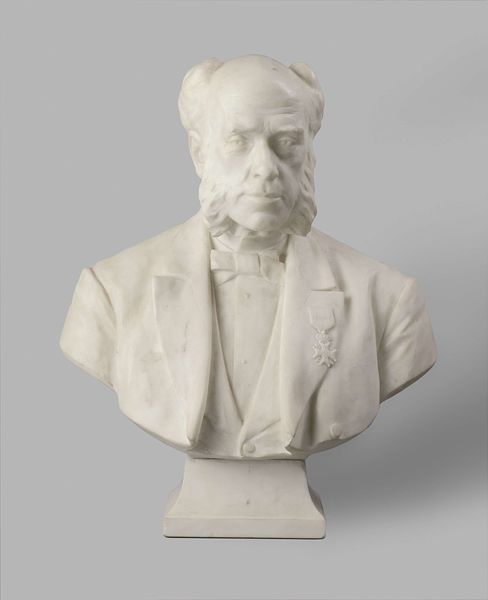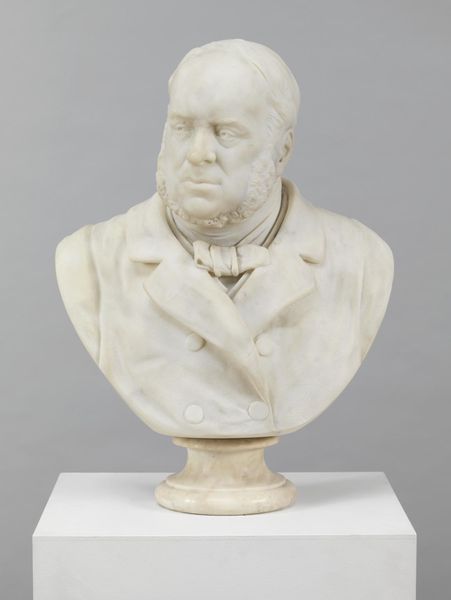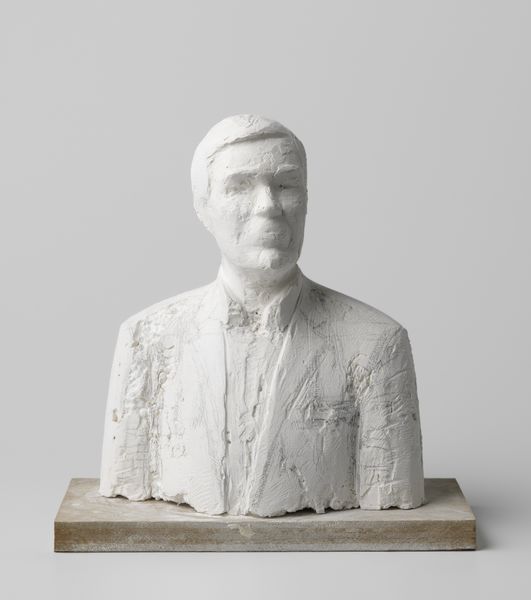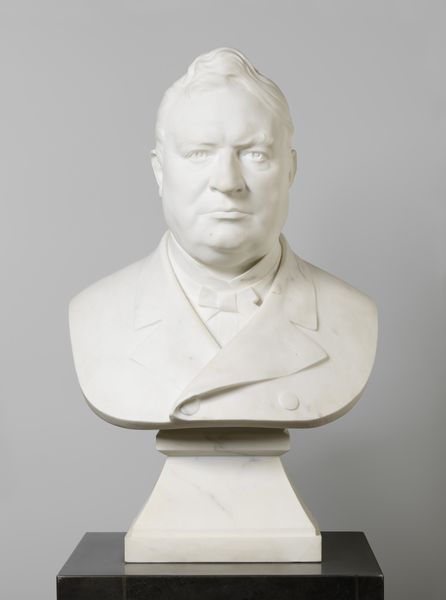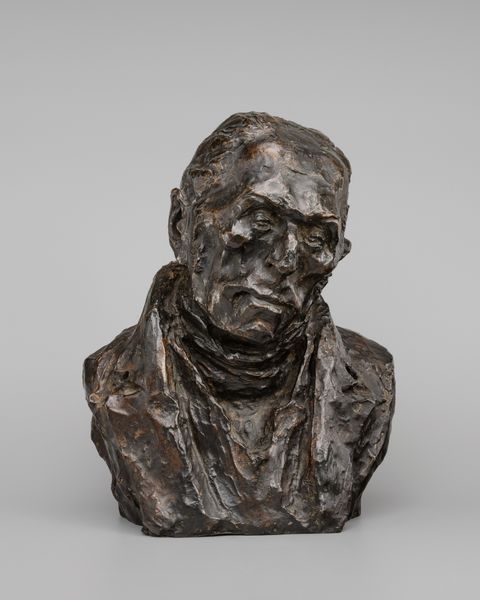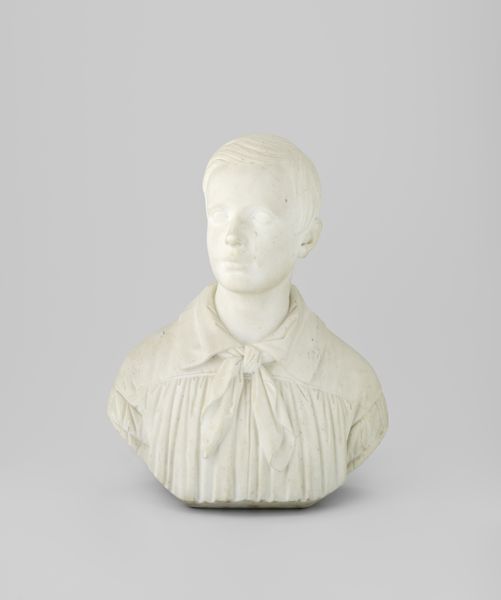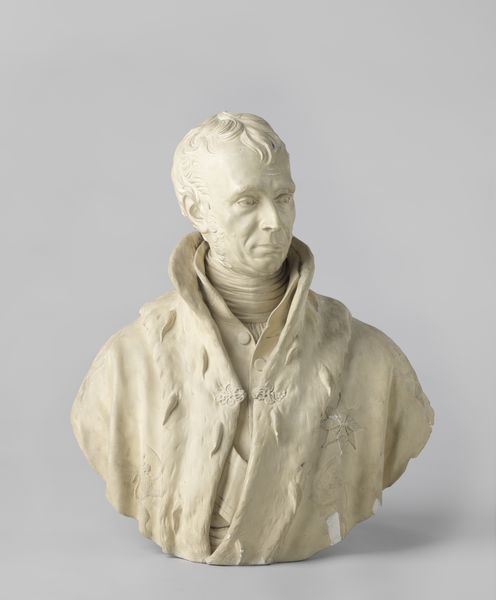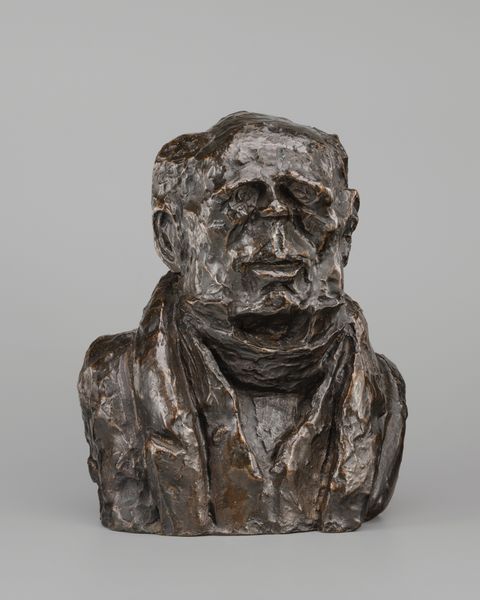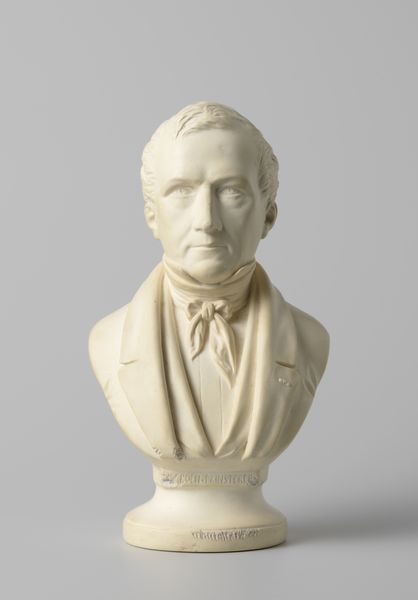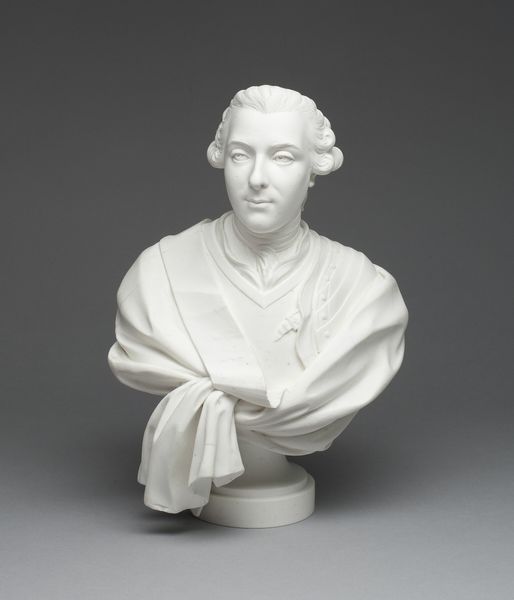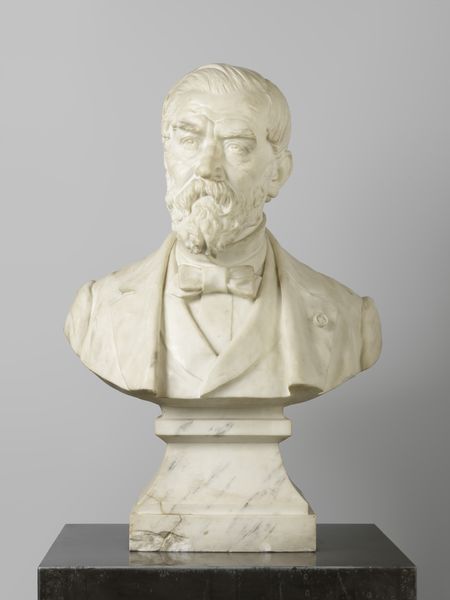
sculpture, marble
#
neoclacissism
#
sculpture
#
marble
#
realism
Copyright: Rijks Museum: Open Domain
Curator: Standing before us, bathed in a serene light here at the Rijksmuseum, is the marble bust of Joannes Beuns (1773-1849). Louis Royer sculpted it sometime between 1850 and 1852, immortalizing a man who seems remarkably…stolid. Editor: Stolid is a great word. I get an immediate sense of self-importance radiating off him. The smooth, cool marble only adds to that detached feeling, as if he's consciously posing for posterity, wanting to make a lasting impression on whoever is going to behold his visage generations from now. Curator: Indeed. Royer was quite the master of capturing realism. You see the slight jowls, the way his hair is neatly combed, almost plastered, to his head… it’s very much a man presented as he wished to be seen. Perhaps that’s why Beuns appears rather unflappable here. What is it about the marble that gives you this vibe? Editor: The neoclassical use of marble often signified status, permanence, and association with classical virtues, which were then often associated with masculinity and power. But it also raises questions about who gets immortalized, and what stories are being told - or silenced - through these public artworks of wealthy figures. The stern expression amplifies that message, no doubt. Curator: Fascinating! Royer has carefully captured Beuns in his jacket and with his scarf tied. To my eye, he is more like a successful businessman in the midst of the Industrial Revolution. Don't you feel the realism overwhelms that air of grandiosity you perceived at first? Editor: It does soften it, certainly. But even this close, seeing the individual details doesn't make him seem…vulnerable, let’s say. His gaze is firm, fixed beyond the moment. It speaks to a society where class and status were literally set in stone, reinforcing particular societal structures and potentially upholding social inequalities. And who knows if, despite its aim to portray realism, this rendering actually reflects his internal character? Curator: Ah, but doesn’t art always involve some element of storytelling? Royer isn't merely mimicking Beuns, he is giving him a certain air, the air that was meant to be read from it. That interaction is what makes it a great artwork. Editor: Agreed. The story that’s told and who gets to tell it—it's essential to continue interrogating these artistic representations and their relationship to history.
Comments
No comments
Be the first to comment and join the conversation on the ultimate creative platform.
